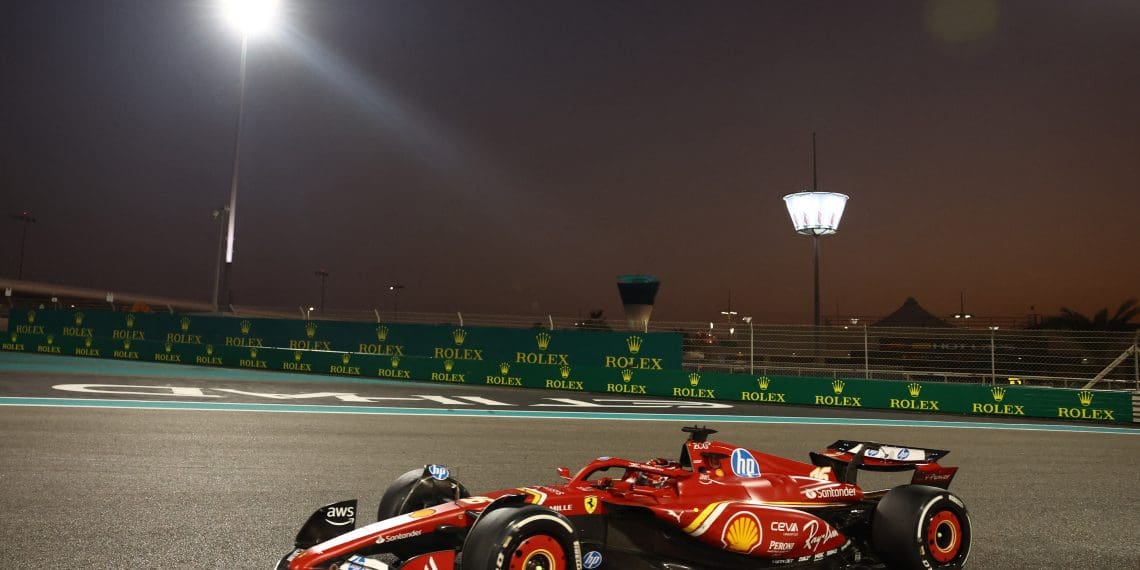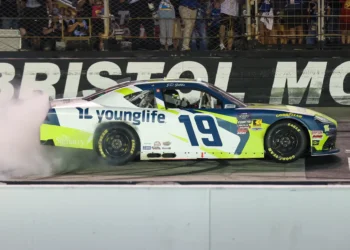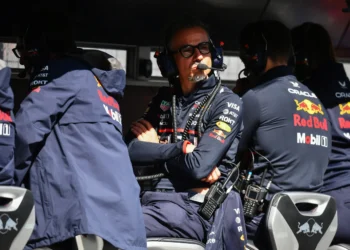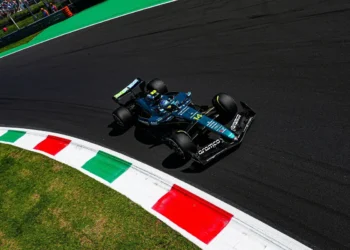Haas has made a bold strategic choice to diverge from Ferrari’s latest front suspension design for its 2025 Formula 1 car, opting instead to carry over the pushrod setup from 2024. This decision marks a significant moment for the team, as it’s the first time in its history that Haas has chosen not to adopt Ferrari’s most up-to-date components in favor of pursuing its own developmental path.
Ferrari’s new suspension concept
Ferrari’s 2025 car is expected to feature a reconfigured pullrod front suspension, a design that offers potential aerodynamic and performance benefits. This setup has already proven successful for teams like Red Bull, McLaren, and Sauber, offering advantages in handling and cornering dynamics.
The pullrod suspension is designed to operate softer at higher ride heights for better grip in slow-speed corners while stiffening at lower ride heights for improved stability. While Ferrari’s approach aims to unlock new performance avenues, Haas has chosen a different route.
Why Haas stuck with the pushrod setup
Haas team principal Ayao Komatsu explained the reasoning behind sticking with Ferrari’s 2024 pushrod configuration:
“This is the first time we’ve not chosen Ferrari’s latest supply, but it wasn’t about making a statement—it was the informed choice,” Komatsu said.
The decision was driven by an in-depth performance study conducted by Haas’ technical team, led by Andrea De Zordo, Davide Paganelli, and Damien Brayshaw. The team determined that the time and resources required to adapt to Ferrari’s pullrod design would result in a short-term aerodynamic disadvantage.
“If we buy Ferrari’s 2025 front suspension, there’s an initial aero hit that requires recovery time. Carrying over the 2024 suspension avoids that disruption and lets us continue development uninterrupted,” Komatsu explained.
Key updates for the VF-25
While Haas will stick with Ferrari’s rear suspension and gearbox, the VF-25 will feature a completely new monocoque. This decision addresses limitations identified in the VF-24 and allows the team to unlock aerodynamic performance in critical areas.
“We learned mid-season that there were limitations in the 2024 chassis design that we couldn’t overcome, even with upgrades,” Komatsu said. “The new monocoque addresses those constraints and builds on the success of the VF-24.”
First runs and pre-season preparation
The VF-25 is set to hit the track for the first time at Silverstone on February 16 during a filming day. Esteban Ocon will take the wheel first to ensure his taller frame fits comfortably, minimizing potential delays if adjustments are needed.
“Esteban is more challenging in terms of driver installation, so he’ll go first to ensure everything is fine,” Komatsu noted.
Rookie Oliver Bearman will have his first run in the VF-25 two days before pre-season testing begins on February 26 in Bahrain.
Balancing immediate goals with long-term vision
Komatsu emphasized that the decision to retain the 2024 suspension setup was not influenced by the looming 2026 regulations but was purely performance-driven:
“We have to be competitive in 2025. After careful analysis, we determined that the carryover front suspension was the best solution for maximizing performance next season.”
A pivotal moment for Haas
Haas’ decision to chart its own path with the VF-25 signals a maturing approach as the team seeks to establish itself as a consistent midfield contender. By prioritizing continuity and targeted upgrades, Haas aims to avoid the pitfalls of overextending its resources while staying competitive.
As the team prepares for the new season, all eyes will be on how the VF-25 performs against its rivals—and whether this bold decision to prioritize evolution over immediate adoption of Ferrari’s latest technology pays dividends.













